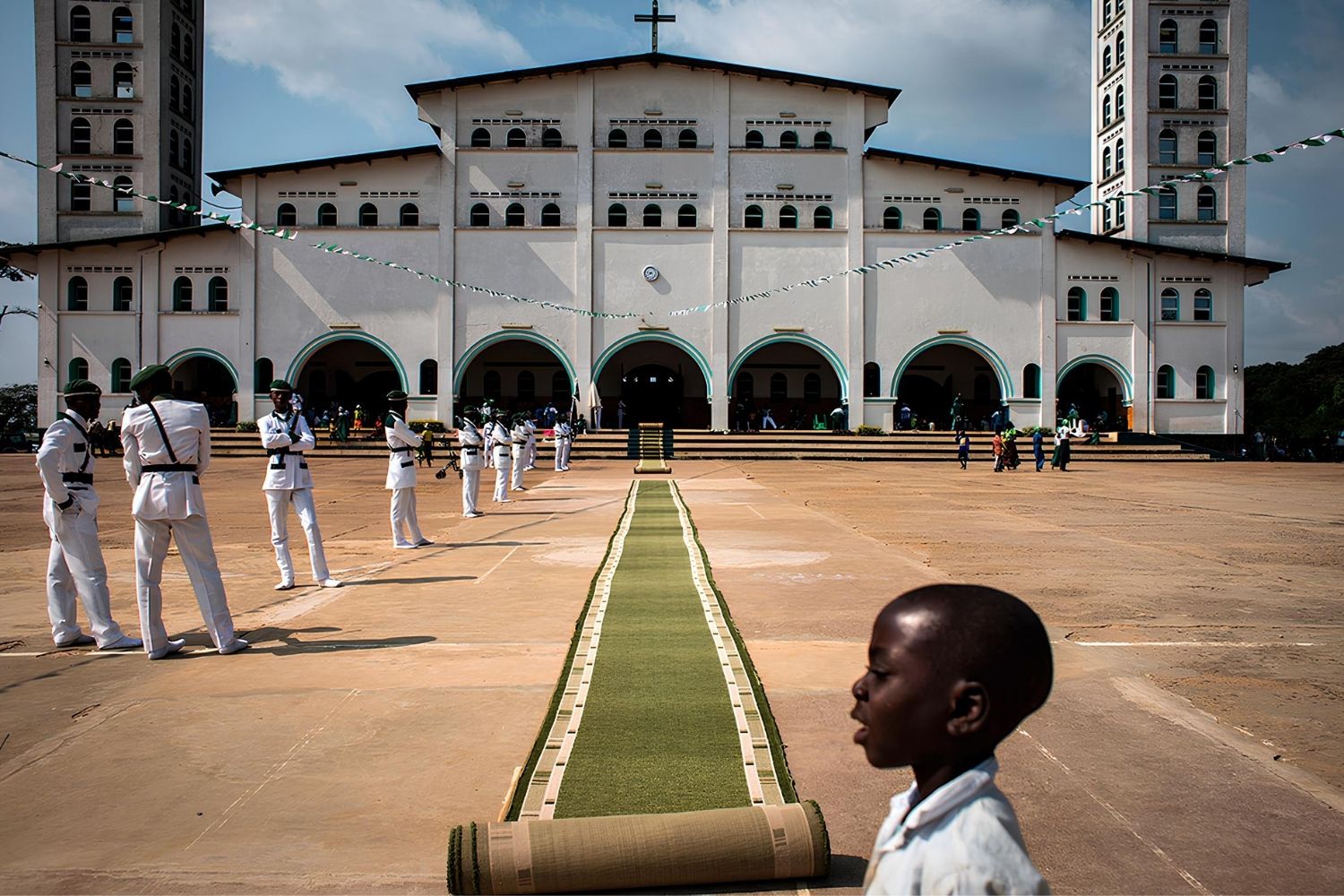
Kimbanguism is a fascinating religious movement that originated in the Democratic Republic of Congo. Founded by Simon Kimbangu in 1921, it has grown to become one of the most significant African-initiated churches. What makes Kimbanguism unique? It blends Christian beliefs with African traditions, emphasizing healing, prophecy, and the importance of African identity. Followers believe Simon Kimbangu was a prophet sent by God to liberate Africans from colonial oppression. The church promotes peace, unity, and self-reliance among its members. With millions of adherents worldwide, Kimbanguism continues to inspire and empower communities, making it a vital part of Africa's spiritual landscape.
Origins of Kimbanguism
Kimbanguism is a fascinating religious movement with deep roots in African culture and history. Let's dive into some intriguing facts about this unique faith.
-
Founded by Simon Kimbangu: Kimbanguism was founded by Simon Kimbangu in 1921 in what is now the Democratic Republic of Congo. He claimed to have received divine revelations.
-
Christian Influence: The religion is heavily influenced by Christianity, particularly Protestantism. Kimbangu was a Baptist catechist before starting his own movement.
-
Colonial Context: The movement began during Belgian colonial rule, a time of significant social and political upheaval in Congo.
Beliefs and Practices
Kimbanguism has a rich tapestry of beliefs and practices that set it apart from other religious movements.
-
Monotheistic: Followers believe in one God, referred to as Nzambi a Mpungu.
-
Jesus Christ: They acknowledge Jesus Christ as the savior but also believe that Simon Kimbangu was a special prophet sent by God.
-
Spiritual Healing: Healing through prayer is a central practice, reflecting Kimbangu's own reputed healing abilities.
-
No Alcohol or Tobacco: Adherents abstain from alcohol and tobacco, emphasizing purity and self-discipline.
-
Sunday Worship: Like many Christian denominations, Kimbanguists observe Sunday as a holy day for worship.
Growth and Spread
Despite initial resistance, Kimbanguism has grown significantly over the years.
-
Rapid Growth: The movement quickly gained a large following, alarming colonial authorities who saw it as a threat.
-
International Presence: Today, Kimbanguism has followers not only in Congo but also in other African countries and even in Europe and the Americas.
-
UNESCO Recognition: In 2000, UNESCO recognized Kimbanguism as a cultural heritage of humanity.
Challenges and Controversies
Like many religious movements, Kimbanguism has faced its share of challenges and controversies.
-
Colonial Repression: Belgian authorities arrested Kimbangu in 1921, sentencing him to life imprisonment. He died in prison in 1951.
-
Schisms: The movement has experienced internal divisions, leading to the formation of splinter groups.
-
Accusations of Heresy: Some Christian denominations have labeled Kimbanguism as heretical due to its unique beliefs.
Cultural Impact
Kimbanguism has had a profound impact on Congolese culture and beyond.
-
Music and Dance: The religion has a rich tradition of music and dance, which are integral parts of worship services.
-
Language Preservation: Kimbanguism has played a role in preserving and promoting the Kikongo language.
-
Social Services: The church provides various social services, including education and healthcare, to its followers.
Modern-Day Kimbanguism
Kimbanguism continues to evolve and adapt to the modern world.
-
Leadership: The church is currently led by Simon Kimbangu's descendants, maintaining a strong familial leadership structure.
-
Technology Use: The movement has embraced modern technology, using social media and other digital platforms to spread its message.
-
Ecumenical Relations: Kimbanguism has engaged in dialogue with other Christian denominations, seeking mutual understanding and respect.
Unique Aspects
Several unique aspects make Kimbanguism stand out among other religious movements.
-
Prophetic Lineage: Followers believe that Kimbangu's three sons also possessed prophetic gifts.
-
Green Color Symbolism: The color green is significant in Kimbanguism, symbolizing hope and renewal.
-
Annual Pilgrimage: Every year, followers make a pilgrimage to Nkamba, the "New Jerusalem," where Kimbangu began his ministry.
-
Distinctive Attire: Adherents often wear distinctive white clothing during worship services, symbolizing purity.
-
Community Focus: The religion places a strong emphasis on community and mutual support among its members.
Global Influence
Kimbanguism's influence extends beyond its African roots.
-
Diaspora Communities: There are active Kimbanguist communities in Europe, particularly in Belgium and France, as well as in the United States.
-
Interfaith Dialogue: The movement participates in interfaith dialogues, promoting peace and understanding among different religious groups.
The Last Word on Kimbanguism
Kimbanguism, with its rich history and unique beliefs, stands out in the world of religions. Founded by Simon Kimbangu in the early 20th century, it has grown significantly, especially in the Democratic Republic of Congo. The faith emphasizes healing, spiritual gifts, and the importance of African identity. Its followers believe in the power of prayer and the guidance of the Holy Spirit. Despite facing persecution, Kimbanguism has thrived and continues to inspire millions. Understanding this religion offers a glimpse into the resilience and spiritual depth of its adherents. Whether you're a history buff, a spiritual seeker, or just curious, Kimbanguism provides a fascinating look into a faith that blends tradition with modernity. Dive into its teachings, and you might find a new perspective on spirituality and community.
Was this page helpful?
Our commitment to delivering trustworthy and engaging content is at the heart of what we do. Each fact on our site is contributed by real users like you, bringing a wealth of diverse insights and information. To ensure the highest standards of accuracy and reliability, our dedicated editors meticulously review each submission. This process guarantees that the facts we share are not only fascinating but also credible. Trust in our commitment to quality and authenticity as you explore and learn with us.
